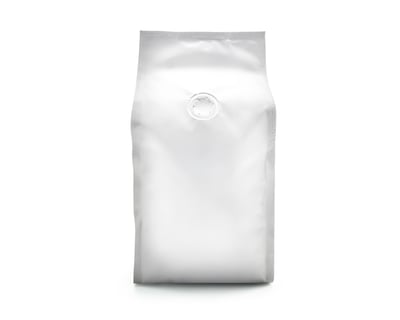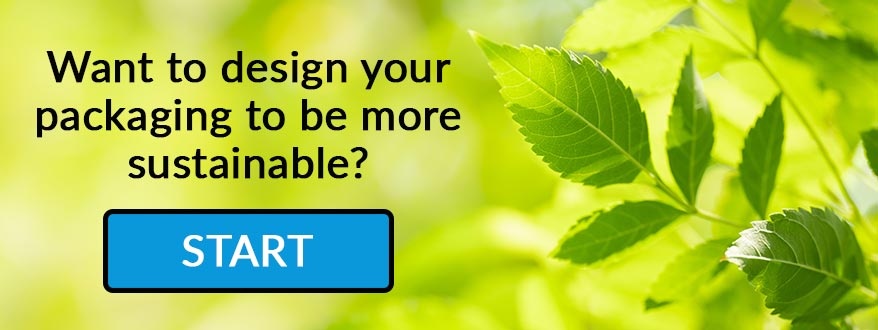Top 5 Benefits Of Flexible Packaging For The Retail Food Industry
Packaging Materials | Environment | The Business of Packaging | Packaging Design | Food Packaging
As we move into summer, one thing that appears to be on many consumer's minds is sustainability
Millions of people in the food industry are trying to figure out how to make less of an impact on our planet earth. Which, all things considered, is a good idea.
While the thought of heading to the cold, desolate, desert world of Mars may be appealing to some, most of us plan on staying here. And, if that is the case, we obviously want to take care of our home rather than trash and destroy it, right?
But, when it comes to making less of an impact on the environment and taking actions that make a difference, what can the everyday consumer do? How can you be a good steward of planet earth while still enjoying a modern lifestyle that’s so dependent upon copious amounts of packaging materials?
As someone who works in the food industry, you are also thinking about these things and figuring out how to make your products more earth-friendly. You are looking for a food packaging material that will make less of an impact on planet earth.
By this point, you have probably learned that flexible packaging is one of the most sustainable packaging material choices on the market today. But you're not exactly sure what the benefits of flexible packaging for your food products are.
Today, we are going to change all that.
Industrial Packaging has been working with earth-friendly and sustainable, flexible packaging materials for decades. And we have helped countless companies just like yours switch to greener packaging supplies.
That is why we have invited UBE Europe GmbH to write on behalf of Change & Challenge to discuss the sustainable and environmental benefits of flexible packaging for food retailers.
This article will explore the top 5 benefits of choosing flexible packaging for your products regarding sustainability and their impact on the environment.
Flexible Packaging For Food Retailers
The benefit of flexible packaging is a question for many retailers and a source of conversation within the food value chain. Flexible packaging innovations have resulted in a complex balance between performance, weight, functionality, production cost, recyclability, and sustainability.
However, many businesses and consumers have yet to discover the sustainability and lower environmental impact of flexible packaging materials for food packaging applications.
The love-hate relationship surrounding plastic packaging has intensified consumer, industrial, and environmental advocacy and has triggered dramatic changes in food production and retailing.
What many already know, and even more have yet to discover, is that flexible packaging (despite the presence of some plastic formulations) is one of the most sustainable forms of food packaging available today.
Flexible packaging films allow for smart food packaging, which can reduce energy consumption, raw materials use, and CO2 emissions during the transportation of food products.
In addition to the various types of flexible films, there are other forms of flexible packaging available to food retailers, including flexible pouches, skin packs, clamshells, MAP (modified atmosphere packaging), and other flexible packaging supplies.
So without further ado, let's explore the top 5 benefits of flexible packaging for the retail food industry!
1. Unique Design And Increased Consumer Communication
The transparent nature of flexible packaging formats offers the possibility to add communicative elements about product quality and condition to the food packaging.
Thus, retailers can communicate expiration dates, product/nutritional value (recipe, ingredient, and correct preparation), sustainability and disposal information to consumers. And, unlike most forms of rigid packaging, these elements can be printed directly onto the surface of certain flexible packaging materials (for example, flexible pouches).
Flexible packaging helps retailers use visually appealing graphics on food packaging to spread messages promoting eco-friendly attitudes and sustainable buying habits. These flexible packaging shapes and formats convey crucial information for good consumer experiences and the industry's push for sustainable, shelf-ready food packaging designs.
2. Increase Food Safety And Food Hygiene
From brick-and-mortar grocery stores to online food stores, the value chain involves touchpoints with a high risk of product failure or contamination before food reaches retailers.
Flexible packaging ensures food safety and food hygiene across these touchpoints to safeguard public health. Flexible packaging provides smart skin protection when a package falls off the shelf or comes in contact with non-food products in retail stores.
Food contamination is a major cause of death. Flexible packaging prevents the possible spread of food-borne diseases and health risks from toxic hazards or physical contaminants such as hair, dust, insects, rodents, and unhygienic food handling in retail stores. And they do all of this at a fraction of the cost of rigid packaging.
With flexible packaging, food products are protected from sneezing or coughing around food shelves. At the same time, food consumers can also see and touch food while shopping at retail stores without any risk of causing food contamination.
For example, gusseted flexible pouches with package valves allow the consumer to feel the texture of the coffee beans inside while the valve allows them to smell the coffee. As the valve only allows air to flow out of the bag, but not in, the coffee inside remains free from contamination.

In the end, flexible packaging increases consumer safety and food hygiene in the retail food industry at a lower cost than rigid packaging.
Want to design your packaging to be more sustainable, we can help!
3. Generating Increased Ecommerce Business
Many consumers are living and working from home. Now, they also expect to be able to do their food shopping from home as well. Flexible packaging formats for e-commerce trends are critical for the efficient delivery of food products during the Covid-19 pandemic.
This is particularly true when considering the greater amount of products that can be shipped in a trailer with flexible packaging versus rigid alternatives. As flexible packaging takes up much less space, you can fit more products in a trailer with flexible packaging materials than rigid.
Consumers are turning to online food retailers for their nutritional needs from their homes or offices as much as they are shopping in traditional food stores without worrying about spillage or damage when their order arrives.
Food shopping online provides a broader display, product comparison, and selection than brick-and-mortar stores for all food types (smoked, cooked, frozen, or fresh).
Flexible packaging innovations and formats propel the new form of encounters between retailers and the final consumers. This can translate to opportunities to increase market share, gain a competitive advantage, and generate sales and profit for many retail stores.
Retailers can also use flexible packaging for unique designs, shapes, and formats to segment the market and target particular consumers, especially younger consumers with more spending power, changing consumer behavior, and living, working, and shopping patterns.
The online grocery retail market is speculated to increase in different regions and countries, while global e-commerce food sales are projected to triple by 2023.
4. Convenience And Smart Retail
Today, people live a busy lifestyle as they combine work, family, and personal obligations. Retailers play an essential role in supporting the food value chain by offering convenience tailored to the lifestyle of food consumers and helping to reduce food and plastic waste.
The element of "convenience" increases resilience and helps retailers avoid on-site packaging and an overloaded supply chain. This improves retail handling, storage, logistics, and sales by allowing retailers to display food so that consumers can make food purchases in small and easy-to-carry formats from retail stores.
This allows them to make informed decisions about their purchases and the stockpiling of food without straining their existing storage capacities.
5. Reduce Food Waste And Increase Sustainability
The environmental and material cost of food production and food packaging has increased the need for resource efficiency. Flexible packaging increases food shelf‐life by regulating the carbon dioxide, moisture, and oxygen penetration to retain the natural freshness of food products for a more extended period.
Flexible packaging also offers innovative solutions to material waste, food waste, and environmental pollution in the retail food industry. For instance, a leak test to compare the failure rate of different packaging types showed that the Nylon material in flexible packaging offers a 50% less failure rate, reduces packaging cost by over 40%, and the packaging weight by more than half. In comparison, the greenhouse and global warming potential is reduced by 13%.
Flexible packaging also prevents early spoilage caused by bacterial contamination to extend food shelf-life and help retailers sell healthy food by retaining the flavor, taste, freshness, texture, and nutrients in food products. This extends food shelf life and helps retailers reduce food waste.
The growing concerns about food waste have placed pressure on the retail industry to adopt sustainable business practices and environmentally-friendly packaging formats.
Flexible packaging offers reduce, reuse, and recycle value, which can help retailers reduce food waste and become partners for a sustainable future and a circular economy model.
Where Can You Learn More About Sustainable Flexible Packaging?
Are you excited at the prospect of packaging your products in a way that will lessen your impact on our planet earth? Would you like to learn more about sustainable, flexible packaging supplies? If you would, then it may make sense for you to read the Flexible Packaging Materials Buying Guide.
With the information in this article, you will be able to choose the appropriate sustainable, flexible packaging supplies for your products.
On the other hand, if you would prefer not to do all the leg work yourself and you would like to have an expert assist you in designing or re-designing your packaging with the best sustainable packaging materials, consider speaking with one of our packaging experts.
They will be able to help you choose the best flexible packaging supplies for your products, even if you ultimately decide to buy them elsewhere.
About “Change and Challenge” Initiative
Change and Challenge is a UBE initiative led by committed individuals and organizations to project the benefits of flexible packaging along the entire food chain - from field to households. We are in active collaboration with NGOs, research institutions, environmental activists, major players, and brand owners across relevant industries. We aim to project the benefits of multilayer flexible packaging and the socio-economic, environmental, ethical, moral, and cost-saving benefits of reducing food waste/loss.


.jpg)
